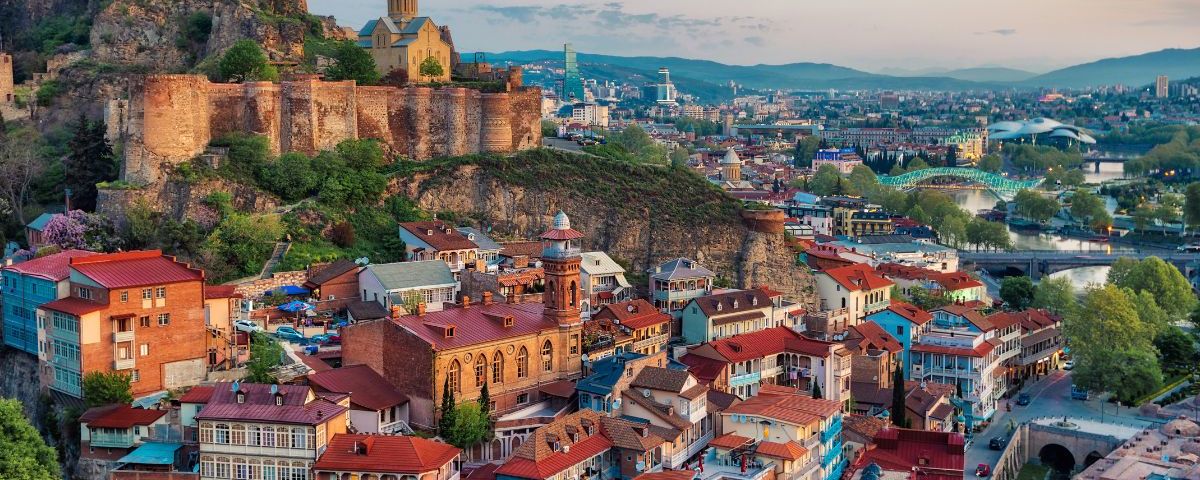
Tbilisi – a journey to the origins
Tbilisi is an amazing city where modernity and antiquity are closely and subtly intertwined. There are some places where you can get in touch with the history of the city and feel its spirit. Abanotubani, Metekhi Temple, Narikala Fortress are not only historical monuments, they are the elders of the city, its guardians.
Every ancient city has its own legends. Tbilisi has many of them, but every citizen knows the legend about the origin of the city. According to the legend, the king of Iberia Vakhtang Gorgasali went hunting. A pheasant, shot by a royal arrow, fell into a hot spring and immediately boiled (although there is a version that the bird was cured). Anyway, impressed by what he saw, the tsar ordered to found a city here and name it Tbilisi (translated as “warm”). The city was founded in the V century and in the VI century it became the main city of the country.
Today the famous sulphur baths of Tbilisi are located here. This part of the city is called Abanotubani (“abano” – bath, “ubani” – district). The sulphur baths are not only a popular place for tourists and citizens, but it is the beginning of the beginning of Tbilisi.
The best way to get to know the capital is to rent a car in Tbilisi, where most of the car rentals are located. You will be offered a wide range of cars from economy class to business cars, SUVs and minivans.
Georgia is a country whose inhabitants are very careful about their history and honor the sacred places. The Metech Bridge, which bears the name of 100000 martyrs. A tragic and great page of the city’s history. In 1227, the Khorezmian army under the leadership of Sultan Jalal-Ed-Din reached the walls of the capital. As he approached the gates of Tbilisi, the sultan encountered fierce resistance. But at night the traitors opened the gates and the enemy entered the city. The Sultan decided to convert the conquered people to his faith: the dome of the Cathedral of Sion was removed and the throne of the victor was erected in its place. Then, by order of the Sultan, Christian icons were placed on the bridge and the citizens were ordered to cross it. Those who disobeyed were threatened with having their heads cut off and their bodies thrown into the river. No one crossed the bridge, no one desecrated the shrines. Legend has it that 100,000 people were martyred.
Nearly eight centuries have passed since that day. But every year, on November 13, thousands of believers come to the Metek Bridge to throw a wreath into the river as a tribute to the memory of their fallen ancestors.
Above the bridge is the Metekhi temple, which is the same age as Tbilisi. The temple was built in the V century by the founder of the city Vakhtang Gorgasali. It was destroyed by Mongol invaders and rebuilt; it was burned down during the Persian pogrom in the 13th century and rebuilt. The temple has survived times of neglect and destruction, at one time it was a warehouse, a prison and a barracks. In the middle of the XX century the temple was almost demolished by the order of Beria. In 1988 the Metekhi temple reopened its doors to the faithful.
Rarely in any city you can find an attraction that is older than the city itself. Narikala Fortress. Nobody knows exactly when it was built, but it was first mentioned in chronicles in the IV century. The structure was built by the Persians for defensive purposes and was named by them Shuris-Tsihye, which means “enviable fortress”. Narikala was completed several times over the centuries: by Arab emirs in the VII-VIII centuries, by Mongol conquerors in the XI-XII centuries. By the way, the fortress received its present name from the Mongols – “Naryn Kala”, which means “small fortress”. The last changes of the fortress took place in XVII-XVIII centuries. Unfortunately, the citadel was badly damaged by an earthquake in 1827 and has not been repaired since.
Everything changes with time. But even today, warm springs gush from the ground and warm Tbilisi. The ancient Narikala and Metekhi tower over the city as silent witnesses of the birth of the city, its life, its history, and people carefully protect them. Not from conquerors, but from time.





